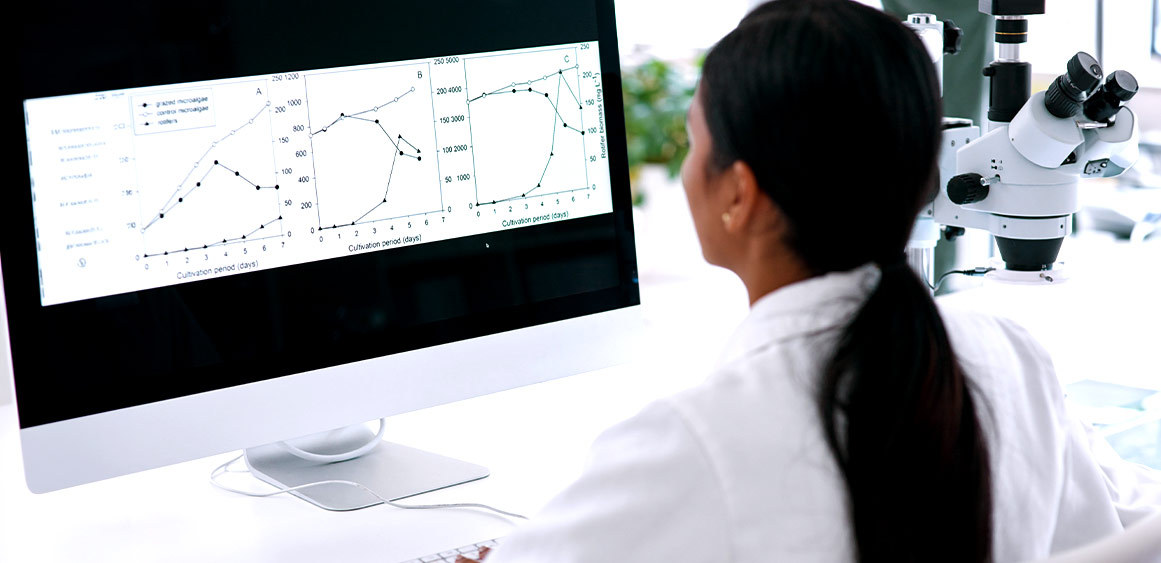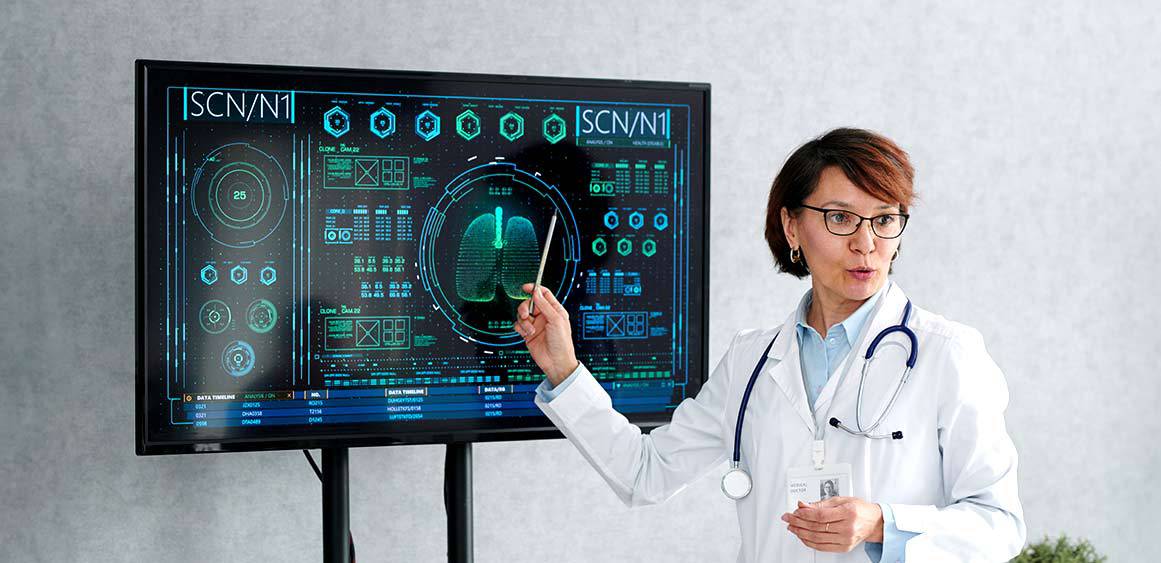Introduction

The healthcare industry has become increasingly data-driven, with vast amounts of information generated daily from patient records, clinical trials, medical imaging, and wearable devices. With this surge in big data, the challenge lies in transforming these complex data sets into meaningful insights that healthcare providers, administrators, and even patients can easily interpret. This is where the importance of UI/UX design in healthcare data visualization becomes crucial.
UI (User Interface) and UX (User Experience) design focus on creating intuitive, accessible, and user-centered solutions that allow users to engage with digital products seamlessly. In healthcare, effective UI/UX can make the difference between understanding critical health metrics and being overwhelmed by data complexity. This blog explores the importance of UI/UX in healthcare data visualization and how simplifying big data through thoughtful design can lead to better healthcare outcomes.
The Growing Complexity of Healthcare Data

The digitization of healthcare has brought with it an explosion of data, often referred to as “big data.” This encompasses everything from electronic health records (EHRs) to genomic data, remote patient monitoring (RPM) reports, and population health statistics. The diversity and volume of this data can be staggering, presenting significant challenges in terms of analysis, interpretation, and action.
Healthcare professionals need to make timely, informed decisions, often under pressure, and without the right tools to distill complex datasets into actionable insights, they risk missing key trends or vital patient information. In this context, data visualization—the process of representing data in a visual format such as charts, graphs, and infographics—becomes essential. However, without a user-friendly interface and experience, even the best data visualization tools can fail to convey the necessary insights.
The Role of UI/UX in Simplifying Big Data
- UI/UX design is about creating a user-first experience, ensuring that data is not just displayed but understood. Here’s how a well-executed UI/UX strategy can simplify big data for healthcare professionals:
1. Clear and Intuitive Interfaces
One of the primary goals of UI/UX design is to ensure that users can easily interact with technology. In healthcare, this means developing dashboards and systems where healthcare providers can quickly access and interpret patient data without a steep learning curve. Complex data sets are visually streamlined, using intuitive color schemes, fonts, icons, and layout structures that present the most critical information upfront.
For example, a well-designed data dashboard for a hospital might prioritize real-time patient monitoring data, highlighting abnormal vitals or trends that require immediate attention. By structuring the interface logically, UX design ensures that healthcare workers can interpret data efficiently, even in high-pressure situations.
-
2. Tailored User Experiences
Not all healthcare users need access to the same information, nor do they interpret data in the same way. Patients, doctors, and administrators may require different data visualization tools. UX design allows for customized experiences tailored to different user personas, ensuring that each stakeholder interacts with data that is relevant to them.
For instance, a doctor may need detailed patient history and real-time monitoring charts, whereas a hospital administrator might focus on resource allocation or operational data. By providing role-specific dashboards, UI/UX design ensures that users aren’t overwhelmed by unnecessary data but instead receive a clear, focused view of the information they need.
-
3. Data Simplification through Visuals
Big data often contains thousands of data points, making manual analysis nearly impossible. Effective UI/UX leverages data visualization techniques—such as graphs, pie charts, bar charts, and heatmaps—to represent large amounts of data in easily digestible formats.
For example, tracking a patient’s glucose levels over a month could be represented by a simple line graph, showing spikes and dips. Without these visuals, healthcare providers would have to sift through raw data tables, increasing the chances of missing critical trends. Data visualizations condense large, complex data sets into snapshots that are easy to interpret and act upon.
-
4. Interactivity for Deeper Insights
Beyond static visuals, modern UI/UX design allows for interactive data visualization, where users can drill down into specific data points to explore the underlying details. In healthcare, this level of interactivity is invaluable.
Imagine a healthcare provider using a data visualization dashboard to view a patient’s heart rate trends over the last 24 hours. Through interactive design, they could click on a particular spike in heart rate and see more information about the event, such as the exact time it occurred, any corresponding symptoms, or other vitals that changed concurrently. This level of interactivity enhances decision-making by providing the context necessary for informed healthcare decisions.
-
5. Improved Communication and Collaboration
In healthcare, communication between different stakeholders—patients, doctors, nurses, and administrators—is critical. Effective UI/UX design facilitates this by providing visual tools that improve the clarity and consistency of data interpretation. For example, well-designed data visualizations can be shared between a care team to ensure that everyone interprets patient data in the same way.
Similarly, patients benefit from simplified visuals that help them understand their own health metrics. For example, rather than presenting raw lab results with complex medical terminology, a patient portal could use charts and color-coded indicators to help patients easily understand whether their results are within a healthy range. This empowers patients to take a more active role in managing their health.
Benefits of UI/UX in Healthcare Data Visualization for Better Outcomes

Effective UI/UX in healthcare data visualization delivers significant benefits, all of which contribute to improved outcomes for patients and healthcare providers:
- Faster Decision-Making: Simplified, visually clear data allows healthcare providers to make quicker, more informed decisions. In emergency situations, where time is of the essence, a well-designed dashboard can save lives by presenting the most crucial information in a digestible format.
- Reduced Cognitive Load: Healthcare professionals are often faced with a deluge of information. A thoughtfully designed interface reduces the mental burden by presenting data logically and using visual cues to emphasize priority information.
- Improved Patient Outcomes: When data is easily understood, healthcare providers can take action sooner and with greater confidence, leading to better patient outcomes. Additionally, patients who understand their own health metrics are more likely to engage in proactive care.
- Enhanced Data Accuracy: By minimizing human error through intuitive design and clear data presentation, healthcare systems can improve the accuracy of diagnoses and treatment plans.
- Increased Efficiency: A streamlined user experience reduces the time healthcare professionals spend navigating systems and searching for data. This improved efficiency can lead to more time spent with patients and less time spent managing administrative tasks.
Conclusion
As healthcare continues to embrace digital transformation, the role of UI/UX design in data visualization becomes increasingly important. The ability to simplify and present complex healthcare data in a way that is both accessible and actionable can greatly enhance decision-making, improve patient care, and lead to better health outcomes overall. By focusing on intuitive interfaces, tailored experiences, and powerful visual tools, healthcare organizations can leverage the full potential of big data to transform their services and optimize performance.
Fineart Design Agency plays a pivotal role in this transformation by offering specialized UI/UX design services tailored for the healthcare industry. With a deep understanding of healthcare challenges and expertise in data visualization, we help healthcare organizations simplify complex data, create user-friendly platforms, and deliver meaningful insights. Ultimately, the future of healthcare is not just in collecting data but in making that data work for healthcare professionals and patients alike—something that can only be achieved through effective UI/UX design, and we are here to make that happen.



